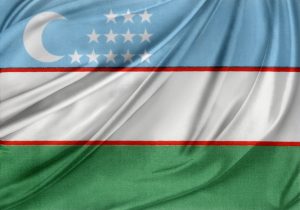On January 29, the delegations of the European Union and the five Central Asian countries convened in Brussels for the two-day Global Gateway Investors Forum. This event aimed to build upon the findings of the EU-commissioned study on sustainable transport connections between Europe and Central Asia and translate political commitments into concrete actions, fostering enhanced connectivity between the EU and Central Asia.
What made the gathering even more significant was the active involvement of a U.S. delegation, led by Nicholas Berliner, the special assistant to the president and senior director for Russia and Central Asia on the National Security Council. The U.S. team is keen on strengthening coordination with both Central Asian and EU partners, highlighting Biden’s commitment to supporting investments and the development of the Trans-Caspian International Transport Route (also known as the “Middle Corridor”) through the Partnership for Global Infrastructure and Investment.
The meeting comes at a time of disruptions in the Red Sea shipping route, a crucial artery handling 10 percent of global trade. Beginning in November 2023, attacks by Houthi rebels on merchant ships in the Bab el-Mandeb Strait, which connects the Red Sea to the Arabian Sea, have led to significant disruptions in global shipping. Compounding the issue, the U.S. and Britain have initiated strikes on Yemen, further exacerbating the situation. As a result, ships find themselves stranded in the Mediterranean or Arabian Seas, seeking alternative routes due to the suspension of transit through the Suez Canal. The recent geopolitical shocks have had a significant impact on seaborne trade routes via the Indian Ocean, known as the “Southern Corridor.”
These shocks, combined with ongoing conflicts, such as Russia’s war in Ukraine and Israel’s in Gaza, have resulted in a substantial surge in logistics costs and food prices. Unfortunately, these challenges are occurring just as the global economy, particularly in developing nations, is still in the process of recovering from the COVID-19 pandemic.
As a result, ships are now altering their routes and opting for the longer journey around Africa’s Cape of Good Hope, adding 30 percent more distance from Asia to Europe. This shift in routes highlights the vulnerabilities of maritime chokepoints. Whether it be the Houthi attacks in the Red Sea, Russia’s grain blockade in the Black Sea, or potential conflicts in the South China Sea near the Strait of Malacca, these incidents underscore a concerning reality. In this era of pervasive mistrust and unpredictable crises, it is crucial to establish alternative avenues along the Middle Corridor to mitigate the risks associated and match supply with demand.
In the prevailing circumstances, Uzbekistan has the potential to emerge as a potential linchpin in the expansion of supply chains. By encouraging and expediting the development of crucial transport routes, such as the Turkmenistan-Uzbekistan route and the China-Kyrgyzstan-Uzbekistan railway within the Middle Corridor, Uzbekistan can position itself as a proactive player and contribute to the establishment of additional pathways for matching supply with demand.
In October 2023, Tashkent took the initiative, bringing together representatives from China, Turkey, Turkmenistan, and other countries to discuss expediting the development of the “Turkmenistan-Uzbekistan route.” This initiative will not only bypass the Northern Corridor, reducing reliance on Russia, but also link China to the Gulf countries through Iran. A significant milestone was achieved during the state visit of Uzbek President Shavkat Mirziyoyev to Beijing on January 23-25, where China expressed support for launching the construction of the China-Kyrgyzstan-Uzbekistan railway at the earliest opportunity.
The combined impact of these two transit-trade routes could establish a secure and reliable path along the Middle Corridor, especially considering the absence of a peace agreement between Armenia and Azerbaijan. By the same token, the relationship between Russian and Georgia is, to a large extent, unpredictable and worrying. Heightened hostilities or their spread could lead to increased freight insurance rates in the region, diminishing the attractiveness of the Middle Corridor for shippers. This is why it is in the interests of all countries in the region, including Kazakhstan to support the development of these two transit-trade routes.
While the prospects for the expansion of the Middle Corridor are promising, especially in light of Russia’s ongoing conflict in Ukraine and the Houthi attacks on merchant shipping in the Red Sea, there is still work to be done. Despite the impressive growth in trade volume along the Middle Corridor, reaching approximately 1.5 million tons in 2022, it only represents a small fraction of the 144 million tons transported by Russia’s Trans-Siberian railway in 2020. In stark contrast, the traditional maritime route through the Indian Ocean transported well over 1 billion tons in 2023.
In conclusion, the Global Gateway Investors Forum presents a crucial opportunity for the EU and Central Asian countries to strengthen their collaboration in the face of evolving geopolitical challenges affecting global trade routes. As they work toward enhancing connectivity along the Middle Corridor, the active involvement of Uzbekistan in developing alternative transport routes signifies a proactive approach to mitigating risks and fostering supply chain resilience in a volatile global landscape. The ongoing efforts to establish secure paths for transit-trade routes demonstrate the potential for transformative regional cooperation, but continued commitment and strategic actions are imperative to fully realize the Middle Corridor’s potential in a rapidly changing world.

































